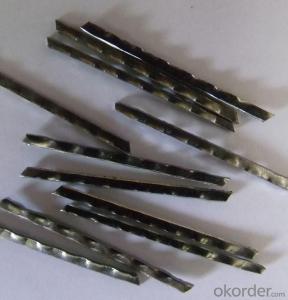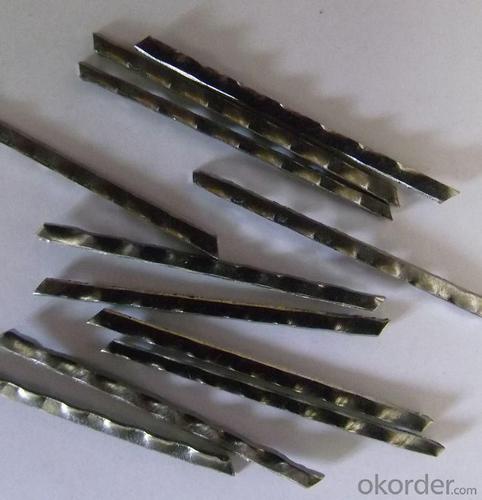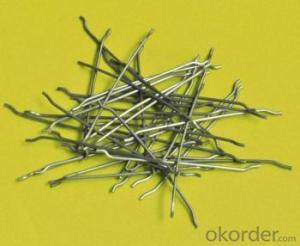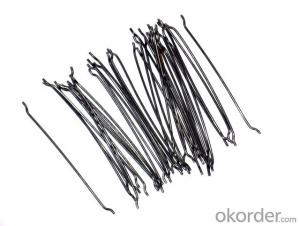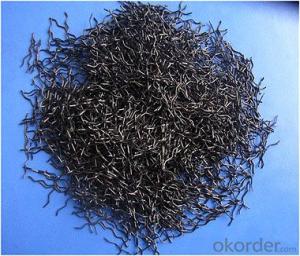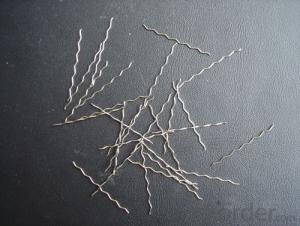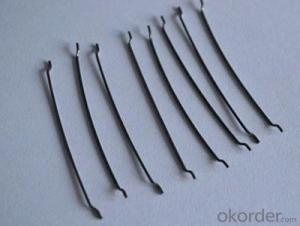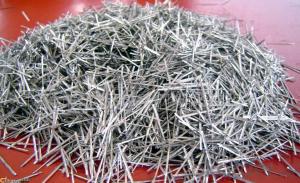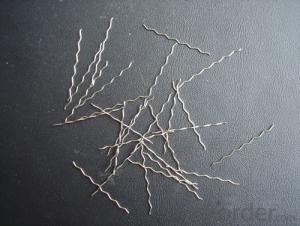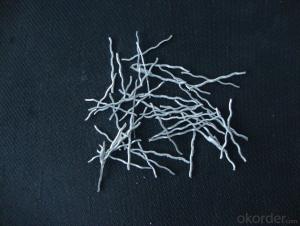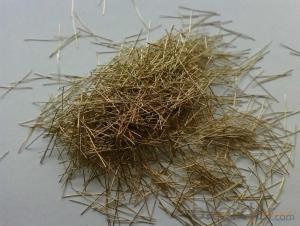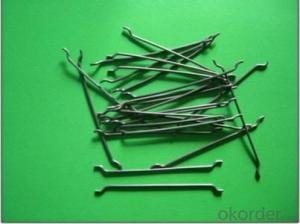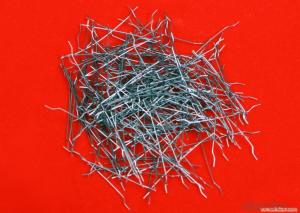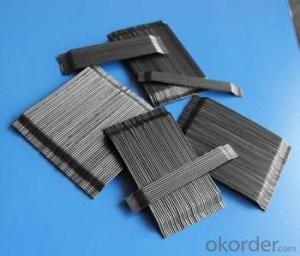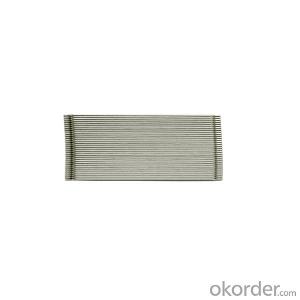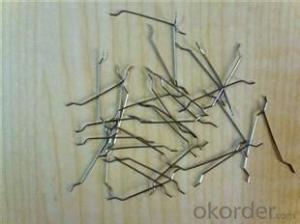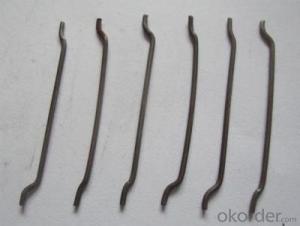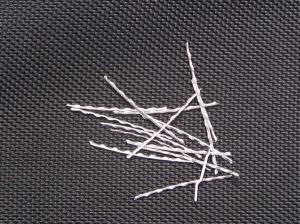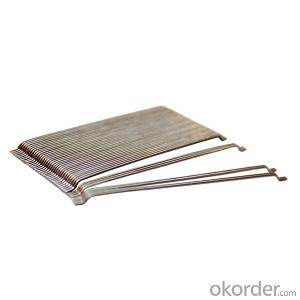Melt Extract Stainless Steel Fiber - Copper Coated Steel Fiber by CNBM International
- Loading Port:
- Tianjin
- Payment Terms:
- TT OR LC
- Min Order Qty:
- 1000 kg
- Supply Capability:
- 30000 kg/month
OKorder Service Pledge
Quality Product, Order Online Tracking, Timely Delivery
OKorder Financial Service
Credit Rating, Credit Services, Credit Purchasing
You Might Also Like
Quick Details
Place of Origin: Jiangsu, China (Mainland)
Model Number: HT-ST
Material: Steel
Specifications
| Diameter | 0.5mm, 0.6mm, 0.75 mm, 0.8mm, 0.9mm | ||
| Length | 30mm, 35mm, 50mm, 60mm | ||
| Aspect Ratio | 60, 65,80 | ||
| Tensile strength | 1200 MPa | ||
| Type | Cold drawn Steel Fiber | ||
| End | Hooked-end Steel Fiber | ||
| Glued/Loose | Glued Steel Fiber | ||
| Bending Angle | 45°(min.30°) | ||
| Usage & Performance | Floor:Trafficked areas and Industrial floors | ||
| Shotcrete :Slope stabilization and Final lining | |||
| Precast concrete:Pipe and Railway sleepers | |||
| Packing | Standard Export Pallet Packing | Bag Packing | 20 kg/Bag,50 bags/Pallet |
| Bulk Packing | 1,000kg/ Bulk Bag | ||
| Loading Quantity | 20’GP | 20-25 Tonne/Tonnes | |
| 40’GP | 25-27 Tonne/Tonnes | ||
| 40’HQ | 25-27 Tonne/Tonnes | ||
| MOQ | 1 kg for trial order | ||
| Supply Ability | 10,000 Tonne/Tonnes per Year | ||
| Payment Terms | T/T or L/C at sight | ||
| Delivery Time | Within 15 days after receiving deposit or original L/C at sight | ||
| Certification | ISO9001:2000, CE, | ||
Picture
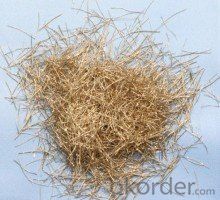
Steel fiber
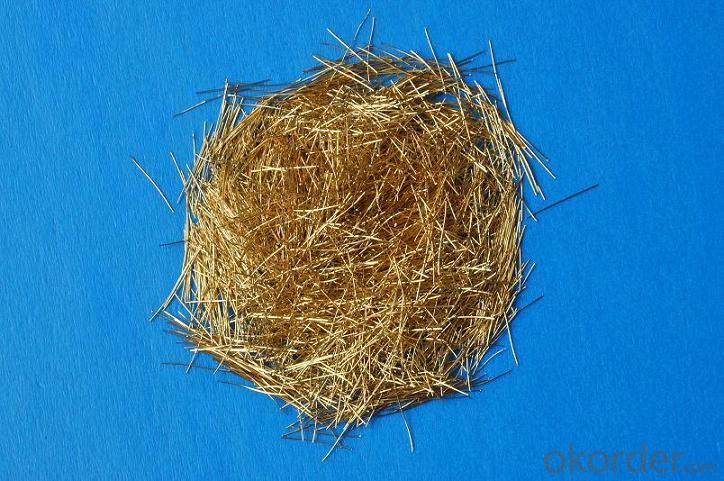
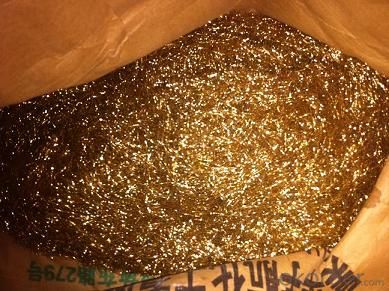
FAQ
certificated: ISO 9001
Technical advantages of Daye steel fiber:
A. Improve mechanical performance of concrete
B. Provide uniform distribution throughout concrete with excellent mixing
C. No balling or caking by adopt correct mixing method
D. Reduce concrete volume
E.Save construction time and cost
F.Reduce excavation volume
G.Available for jointless floor.
- Q: Does melt extract stainless steel fiber improve the resistance to freeze-thaw cycles of concrete?
- Yes, melt extract stainless steel fiber does improve the resistance to freeze-thaw cycles of concrete. The addition of stainless steel fibers in concrete helps to enhance its durability and performance by minimizing the detrimental effects of freeze-thaw cycles. When water freezes within the concrete, it expands and exerts pressure on the surrounding matrix, leading to cracking and eventual deterioration of the structure. However, the inclusion of melt extract stainless steel fibers helps to mitigate these issues. The fibers act as reinforcement within the concrete, providing additional strength and preventing the propagation of cracks. This reinforcement effectively enhances the resistance of the concrete to the damaging effects of freeze-thaw cycles. Moreover, melt extract stainless steel fibers have excellent corrosion resistance properties, which further contribute to the improved durability of the concrete. Unlike other types of fibers, stainless steel fibers do not corrode or degrade over time, ensuring their long-term effectiveness in enhancing freeze-thaw resistance. Overall, the addition of melt extract stainless steel fiber in concrete significantly improves its resistance to freeze-thaw cycles, preventing cracking and extending the lifespan of the structure.
- Q: Can melt extract stainless steel fiber be used in seismic-resistant concrete structures?
- Seismic-resistant concrete structures can benefit from the utilization of melt extract stainless steel fiber. These fibers, along with other types of stainless steel fibers, are commonly employed as reinforcement in concrete to augment its tensile strength, ductility, and durability. By incorporating stainless steel fibers, especially melt extract ones, the overall performance and resistance of the structure can be significantly enhanced, particularly in situations where the concrete is subjected to substantial dynamic loads during seismic events. The utilization of melt extract stainless steel fibers in seismic-resistant concrete structures presents numerous advantages. Firstly, these fibers possess remarkable tensile strength and exceptional ductility, allowing them to proficiently distribute applied forces and withstand cracking and deformation caused by seismic loads. This capability plays a crucial role in maintaining the integrity of the concrete structure and preventing disastrous failure during earthquakes. Furthermore, stainless steel fibers exhibit excellent resistance to corrosion, a critical attribute for seismic-resistant concrete structures that may be exposed to harsh environmental conditions like high moisture or chloride exposure. The corrosion resistance of these fibers ensures the long-term durability and structural integrity of the concrete, even in aggressive environments. Moreover, melt extract stainless steel fibers also enhance the bond strength between the fiber and the concrete matrix. This improvement leads to enhanced composite behavior of the concrete, bolstering its resistance to shear stresses and cracking, both of which are commonly encountered during seismic events. In conclusion, the utilization of melt extract stainless steel fiber in seismic-resistant concrete structures presents a viable and effective solution to enhance their structural performance and durability. It improves the tensile strength, ductility, and corrosion resistance of the concrete, thereby ensuring its ability to withstand the dynamic forces and deformations associated with earthquakes.
- Q: Can melt extract stainless steel fiber be used in thin concrete sections?
- Yes, melt extract stainless steel fiber can be used in thin concrete sections. The addition of stainless steel fibers to thin concrete sections helps to enhance the mechanical properties and overall performance of the concrete. These fibers provide reinforcement and improve the resistance to cracking and shrinkage, which is particularly important in thin sections where the concrete is more vulnerable to these issues. The stainless steel fibers also increase the durability and longevity of the concrete, making it suitable for various applications, including thin sections.
- Q: Does melt extract stainless steel fiber affect the color or appearance of concrete?
- No, melt extract stainless steel fiber does not affect the color or appearance of concrete. This type of fiber is typically added to concrete mixtures as a reinforcement material, rather than for aesthetic purposes. The fibers are usually small and thin, and when mixed into the concrete, they blend in with the rest of the materials and do not alter the color or appearance of the finished product. The primary function of melt extract stainless steel fibers is to improve the strength and durability of the concrete, making it more resistant to cracking and enhancing its overall performance.
- Q: What is the effect of melt extract stainless steel fiber on the crack width in concrete?
- The use of melt extract stainless steel fibers in concrete has a significant effect on the crack width. These fibers are added to the concrete mixture to enhance its durability and strength. When the concrete is subjected to external forces or temperature fluctuations, cracks may occur. However, the presence of stainless steel fibers helps to control and minimize the width of these cracks. The main reason behind this effect is the unique properties of stainless steel fibers. These fibers are known for their high tensile strength and ductility. When cracks start to form in the concrete, the stainless steel fibers act as reinforcement and distribute the stress across the matrix. This redistribution of stress helps to prevent the cracks from widening. Additionally, the presence of stainless steel fibers also improves the overall toughness of the concrete. As a result, the concrete becomes more resistant to crack propagation. This means that even if cracks do form, they are less likely to extend and cause significant damage. Moreover, melt extract stainless steel fibers also improve the overall durability of the concrete. They act as a barrier against corrosion, protecting the concrete from the harmful effects of moisture, chemicals, and other environmental factors. This enhances the lifespan of the concrete structure and reduces the need for frequent repairs or replacements. In summary, the use of melt extract stainless steel fibers in concrete has a positive effect on the crack width. These fibers reinforce the concrete matrix, distribute stress, and prevent cracks from widening. Furthermore, they improve the overall toughness and durability of the concrete, making it more resistant to crack propagation and extending its lifespan.
- Q: Can melt extract stainless steel fiber be used in water retaining structures?
- Yes, melt extract stainless steel fiber can be used in water retaining structures. This type of fiber is highly corrosion-resistant and can withstand exposure to water without compromising its performance. It can be incorporated into concrete or other materials used in water retaining structures to enhance their strength, durability, and crack resistance.
- Q: Can melt extract stainless steel fiber be used in the construction of wastewater treatment plants?
- Yes, melt extract stainless steel fiber can be used in the construction of wastewater treatment plants. Stainless steel fiber has excellent corrosion resistance properties, making it suitable for use in environments with high moisture and chemical exposure, such as wastewater treatment plants. It can be used in various applications within the plant, including reinforcing concrete structures, providing additional strength and durability. The stainless steel fiber's resistance to corrosion ensures its longevity and reduces the risk of degradation over time. Additionally, the fiber's high tensile strength and ability to withstand extreme temperatures make it a reliable choice for use in wastewater treatment plants.
- Q: Is melt extract stainless steel fiber suitable for use in tunnel lining construction?
- Yes, melt extract stainless steel fiber is suitable for use in tunnel lining construction. It provides enhanced strength, durability, and resistance to corrosion, making it an ideal choice for reinforcing concrete in tunnels.
- Q: Can melt extract stainless steel fiber be used in high-rise or tall buildings?
- Yes, melt extract stainless steel fiber can be used in high-rise or tall buildings. This type of fiber is known for its high strength and durability, making it suitable for use in structures that require a high level of structural integrity. Additionally, stainless steel fibers have excellent resistance to corrosion, fire, and extreme temperatures, which are important factors to consider in high-rise buildings. The use of melt extract stainless steel fiber can enhance the overall strength and stability of the building, ensuring its structural integrity and safety.
- Q: What are the advantages of using melt extract stainless steel fiber in concrete?
- There are several advantages to using melt extract stainless steel fiber in concrete. To begin with, the durability and longevity of concrete structures are enhanced by stainless steel fiber. The properties of stainless steel that resist corrosion prevent rusting, even in harsh environments. This ensures that the structural integrity of the concrete remains intact over time, making it perfect for use in coastal or industrial areas where exposure to saltwater or chemicals is common. In addition, the tensile strength and crack resistance of concrete are improved by stainless steel fiber. Acting as reinforcement, the fibers distribute stresses and prevent cracks from forming and spreading. This leads to a more robust and durable concrete, reducing the need for expensive repairs or replacements. Furthermore, the impact and abrasion resistance of concrete are enhanced by stainless steel fiber. Acting as a barrier, the fibers absorb and dissipate energy upon impact, reducing the likelihood of surface damage. This makes it suitable for high-traffic areas like roads, bridges, and industrial floors, where wear and tear are major concerns. Moreover, the fire resistance of concrete can be improved by stainless steel fiber. The high melting point of stainless steel (typically above 1300°C) creates a barrier against heat transfer, slowing down the spread of fire and protecting the underlying structure. This is crucial in applications where fire safety is a priority, such as tunnels, parking garages, or buildings. Lastly, the use of stainless steel fiber in concrete allows for design flexibility. The fibers can be easily mixed into the concrete, enabling the creation of complex shapes and forms. This opens up opportunities for innovative architectural designs and structural solutions. In conclusion, melt extract stainless steel fiber provides advantages such as increased durability, enhanced tensile strength, improved impact and abrasion resistance, heightened fire resistance, and design flexibility when used in concrete. These benefits make it a valuable addition to concrete mixtures, ensuring the longevity and performance of concrete structures in various applications.
Send your message to us
Melt Extract Stainless Steel Fiber - Copper Coated Steel Fiber by CNBM International
- Loading Port:
- Tianjin
- Payment Terms:
- TT OR LC
- Min Order Qty:
- 1000 kg
- Supply Capability:
- 30000 kg/month
OKorder Service Pledge
Quality Product, Order Online Tracking, Timely Delivery
OKorder Financial Service
Credit Rating, Credit Services, Credit Purchasing
Similar products
Hot products
Hot Searches
Related keywords
